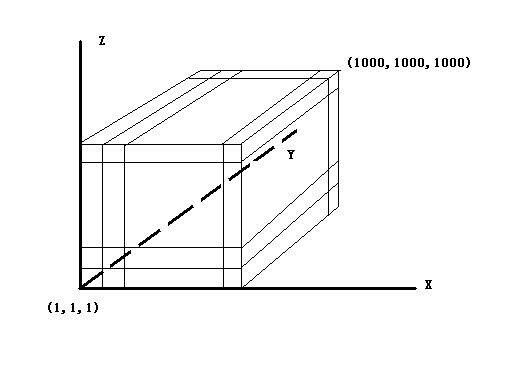Light Switching Game
The Light Switching Game is played on a 1000 × 1000 × 1000 cube of cells with a light in each cell, as Figure.1 shows. Initially, most of the lights are off while exactly N lights are on. Two players take moves alternately. A move consists of switching the lights at the corners of a cuboid, i.e. (x1,y1,z1), (x1,y1,z2), (x1,y2,z1), (x1,y2,z2), (x2,y1,z1), (x2,y1,z2), (x2,y2,z1), (x2,y2,z2) where 1 ≤ x1 ≤ x2 ≤ 1000, 1 ≤y1 ≤ y2 ≤ 1000, 1 ≤z1 ≤ z2 ≤ 1000 and the light at the corner (x2,y2,z2) must be on (and turned off after the move). Notice the cuboid is possibly degenerated to a rectangle, a line or even a single cell so that the player may also switching four, two or one besides eight lights in a move. The player loses the game when he can not take a move.

Figure.1
You will find out whether the second player can win if both players play optimally.
There are multiple test cases.
Every test case starts with one line containing a single number N indicating the number of lights which is initially on. (N ≤ 100)
Each of the next N lines contains the coordinates (x, y, z) (1 ≤ x, y, z ≤ 1000) showing that the light at this position is on initially.
One line for each test case which contains "Yes" or "No" indicating whether the second player can win the game.
4 5 11 30 5 19 19 23 15 6 2 26 16 3 9 20 9 8 1 28 30 22 26
Yes No
Submit
